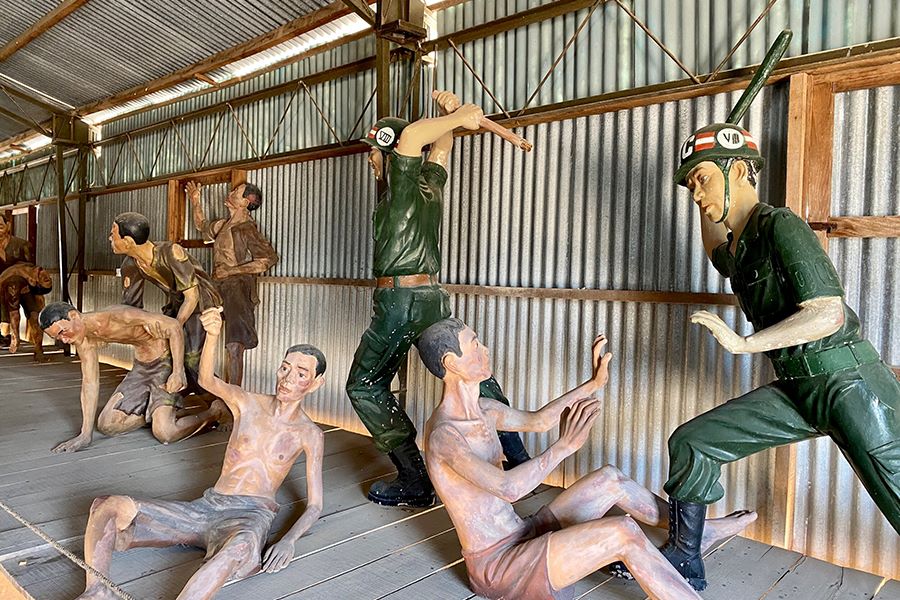Vietnam is not only famous for its people, cuisine, and natural sceneries but also for our heroism history. Phu Quoc Prison is the living evidence about how much the revolutionary soldiers had sacrificed for the independence, justice, and unity of Vietnam. Phu Quoc Prison attracts 10,000 tourists every year, and many of them used to be soldiers in the Vietnam War. Although the war has passed, this place still receives a lot of attention from domestic and international tourists. This article from Vietnam travel agency will give you a brief about Phu Quoc Coconut Prison before visiting the place.
What tourists need to know before traveling to Phu Quoc Prison
Phu Quoc Prison Camp and Phu Quoc Coconut Tree Prison are different names for the prison located in the south of Phu Quoc island. It is located at 350 Nguyen Van Cu Street, An Thoi Ward, Duong Dong Town, Phu Quoc Island. During the Indochina War, it was named Phu Quoc Coconut Tree Prison. Phu Quoc Coconut Prison was the national prison of the Republic of Vietnam, which captured 32.000 prisoners. In 1995, the Vietnamese Minister of Culture and Information officially certified Phu Quoc Prison as a Special National Relic.
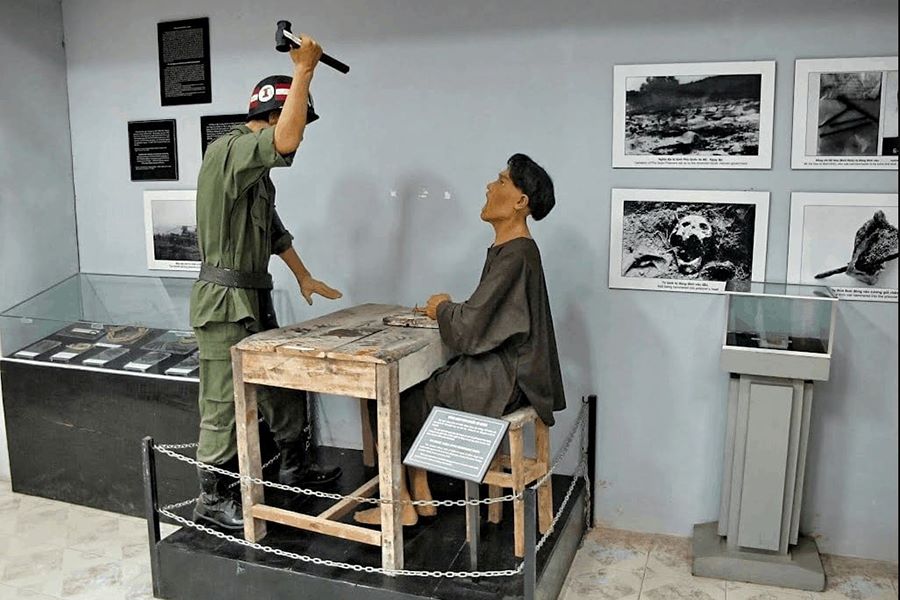
Phu Quoc Prison’s History
Phu Quoc Prison during French Colonialism in Vietnam
The prison was built in 1946 when the French army invaded Phu Quoc Island. At that time, the area of the prison was 40 hectares and divided into 4 sections A, B, C, and D. It was considered to be the largest prison in Southeast East Asia. Phu Quoc Prison Camp was carefully guarded, surrounded by barbed wire and protective light. All the guards were well-equipped with guns.
Until 4/1954, Phu Quoc Coconut Prison had 14.000 prisoners, most of whom were male. 99 Vietnamese soldiers died in that period at this prison because of the French army’s torture. After Geneve Agreements in 1954, the French returned the ownership of the prison and the prisoners to the Vietnamese government.
Phu Quoc’s Coconut Tree Prison during the Vietnam War
In 1955, after Phu Quoc Prison was transferred to the government of The Republic of Vietnam, another prison of about 4 hectares was built next to Phu Quoc Prison camp. It was then renamed Coconut Tree Prison and divided into different areas for males, females, and the elderly.
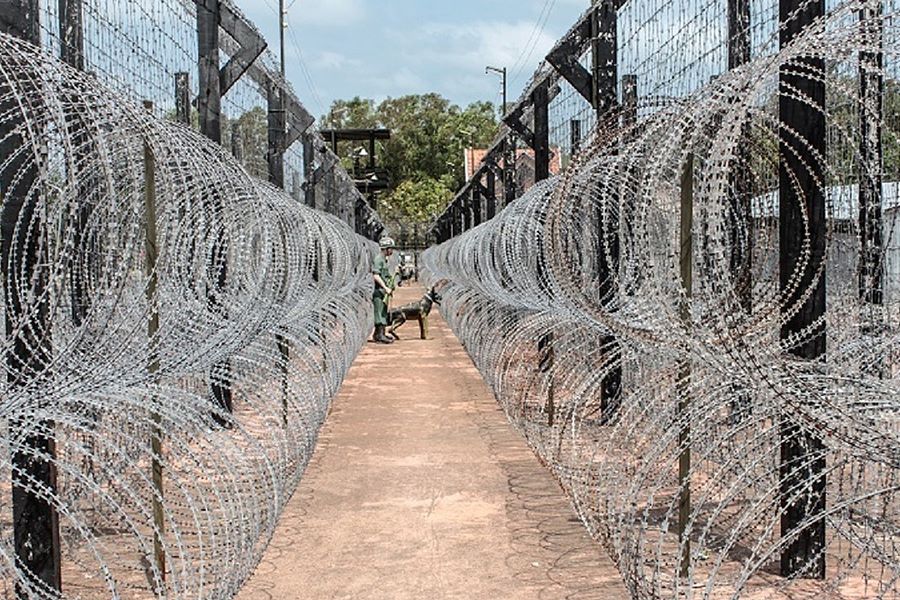
More barbarous tortures were conducted on the communist soldiers’ bodies, such as in Phu Quoc Prison tiger cage, nails hammering to foreheads or knees, or high-voltage electrical shock. During the Vietnam War time, thousands of soldiers were dead, and tens of thousands of people were permanently wounded.
Historical relics that remain in Phu Quoc Prison, Vietnam
Prisoner graveyard
The prisoner graveyard at Phu Quoc Coconut Tree Prison is 2000m2 big and 1 kilometer away from the prison – B2 section. The graveyard was designed in the form of a circle with a monument of a large fist representing the heroic spirits of its Vietnamese predecessor.
Kien Van church
Kien Van Church at Phu Quoc Coconut Tree Prison was 4000m2 big. However, there are just concrete ruins now.
Exhibition house of relics
The exhibition house of relics at Phu Quoc Coconut Prison has 2 separate rooms. One room contains the history and development of Phu Quoc Coconut Tree Prison alongside some artifacts. The other holds 100 pictures and documents of how Vietnamese revolutionary soldiers were tortured.
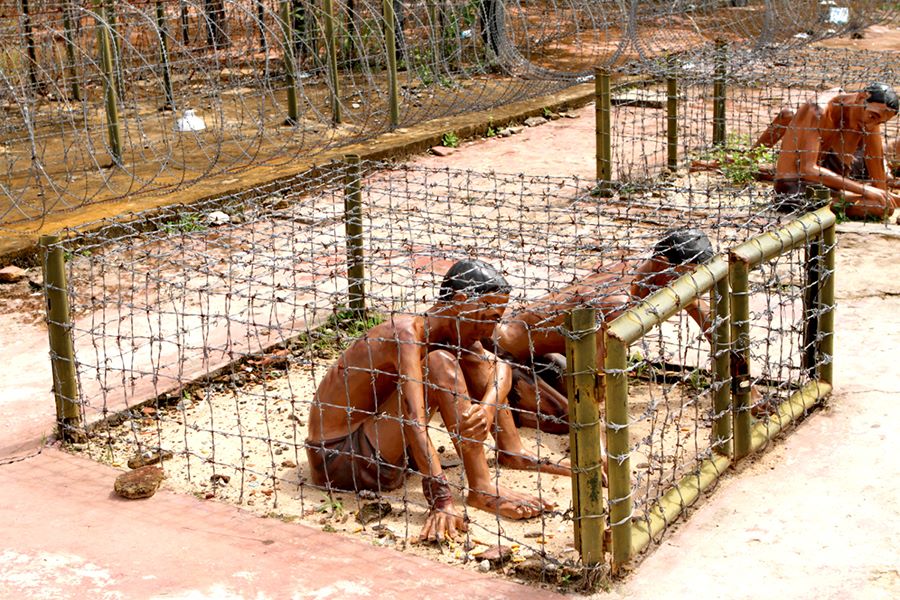
B2 Section
The B2 Section is where the tourist can see restored models of different torturing methods. There were 40 types of different brutal tortures used to punish Vietnamese revolutionary soldiers.
Monument to martyrs at Doi Sim
The monument was designed with the figure of a person walking out of 2 waves, which is 5 meters high. The monument is a metaphor for the martyrs and Phu Quoc Coconut Tree Prison.
Activities you can do at Phu Quoc Island’s Coconut Prison
Observe the illustration of cruel torturing methods in the B2 section
The wax models in the B2 Section were made to illustrate the torture scenes. Visitors can feel the brutal reality of war when visiting the B2 Section.
Visit the solitary confinement room
The solitary confinement room of Phu Quoc Island’s Coconut Prison, where many high-ranking people in the Vietnamese army were kept, is the most haunting place for many people. It is because, at this place, a lot of cruel forms of torture were conducted on Vietnamese soldiers.
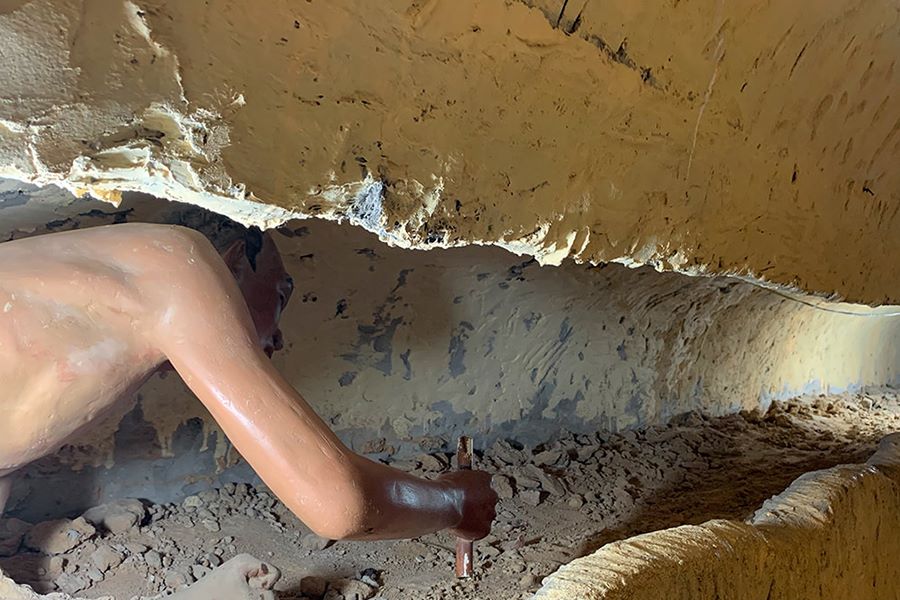
Get to know about different torturing methods conducted in the past
There are a lot of torturing methods that former Phu Quoc prisoners described, such as Phu Quoc Prison’s tiger cage, nails hammering to body parts, pulling out teeth by wooden stick or hammer, a hot frying pan, and many more.
Tips when visiting Phu Quoc Island’s Coconut Prison in Vietnam
Visitors should notice the following when visiting Phu Quoc Coconut Tree Prison:
- Visitors are advised to wear politely since this is a national historical relic.
- Don’t litter.
- Avoid touching the artifacts.
- The place is so vast that it is challenging to find a nearby food court, so you should prepare some snacks and water in advance.
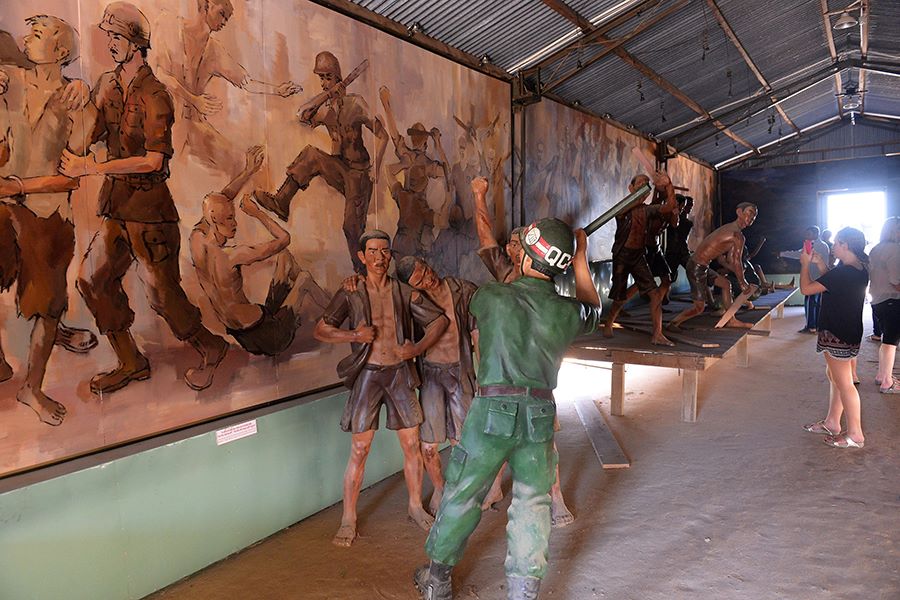
Phu Quoc Prison brings historical memories to life and is a special place holding Vietnamese stunning historical moments. Therefore, if you would like to explore more about wartime history, head to Phu Quoc Prison to view history in the most lively way.

